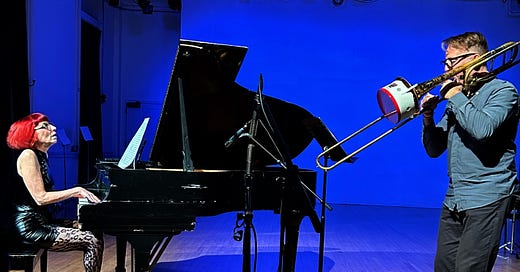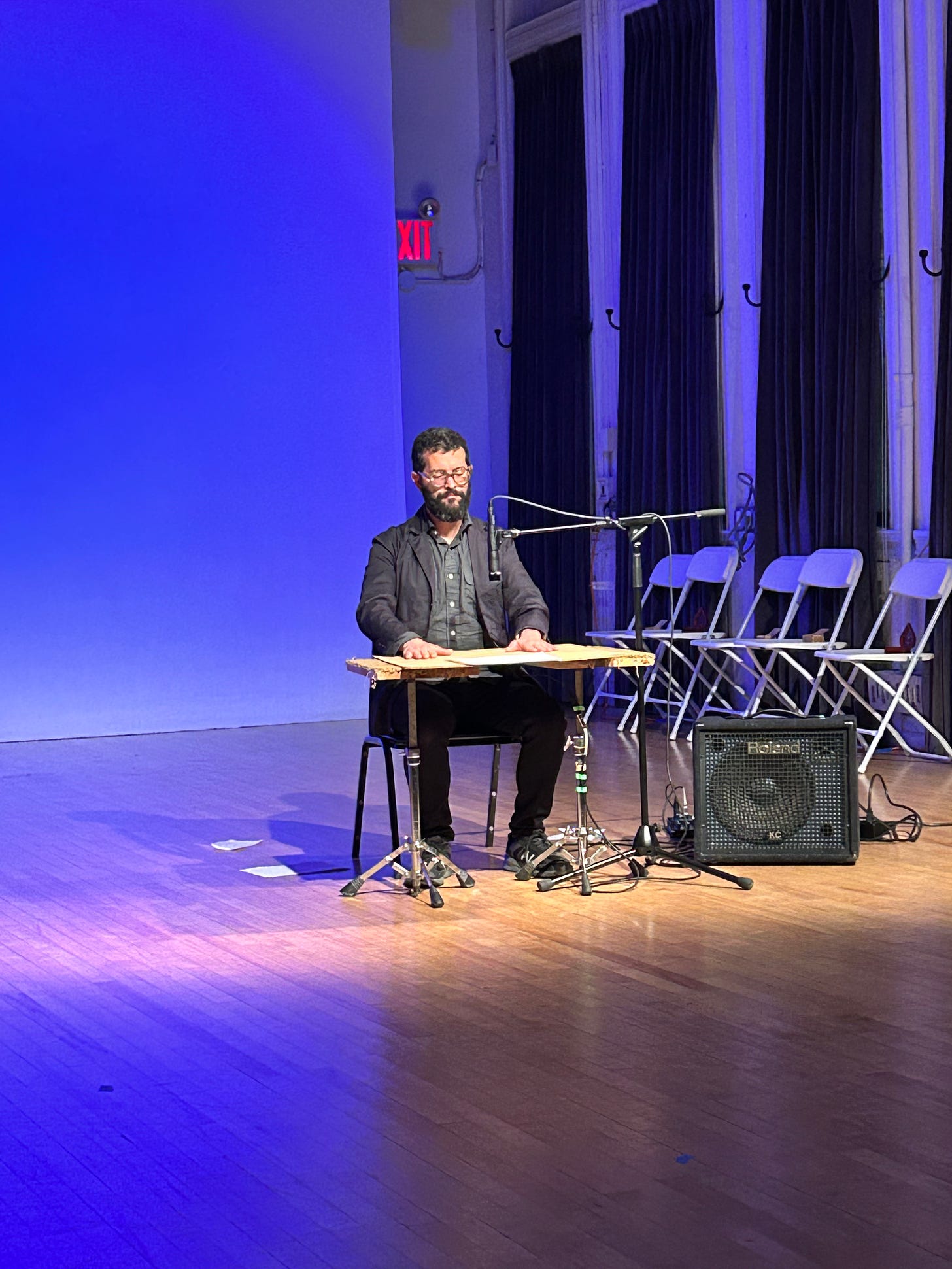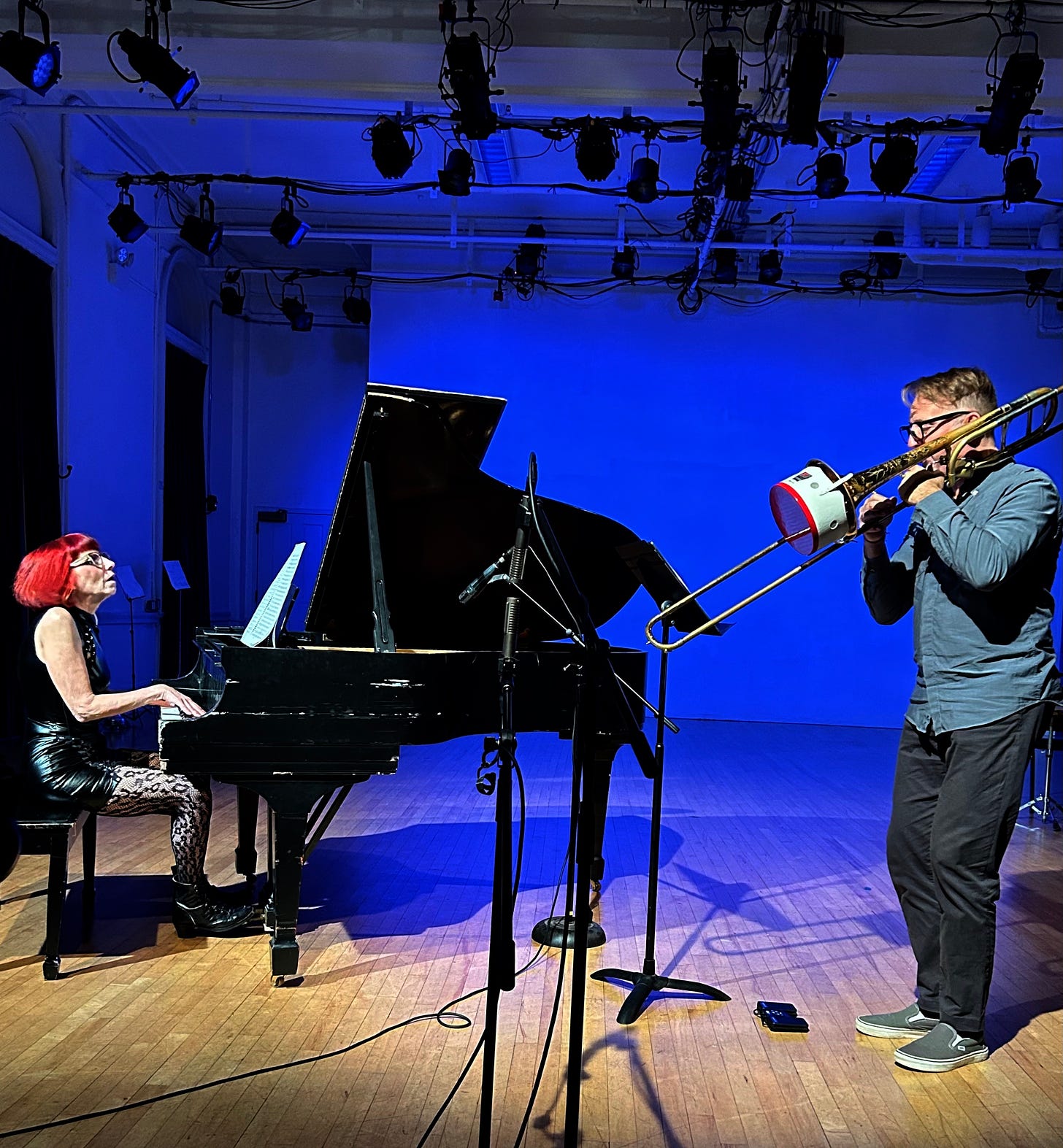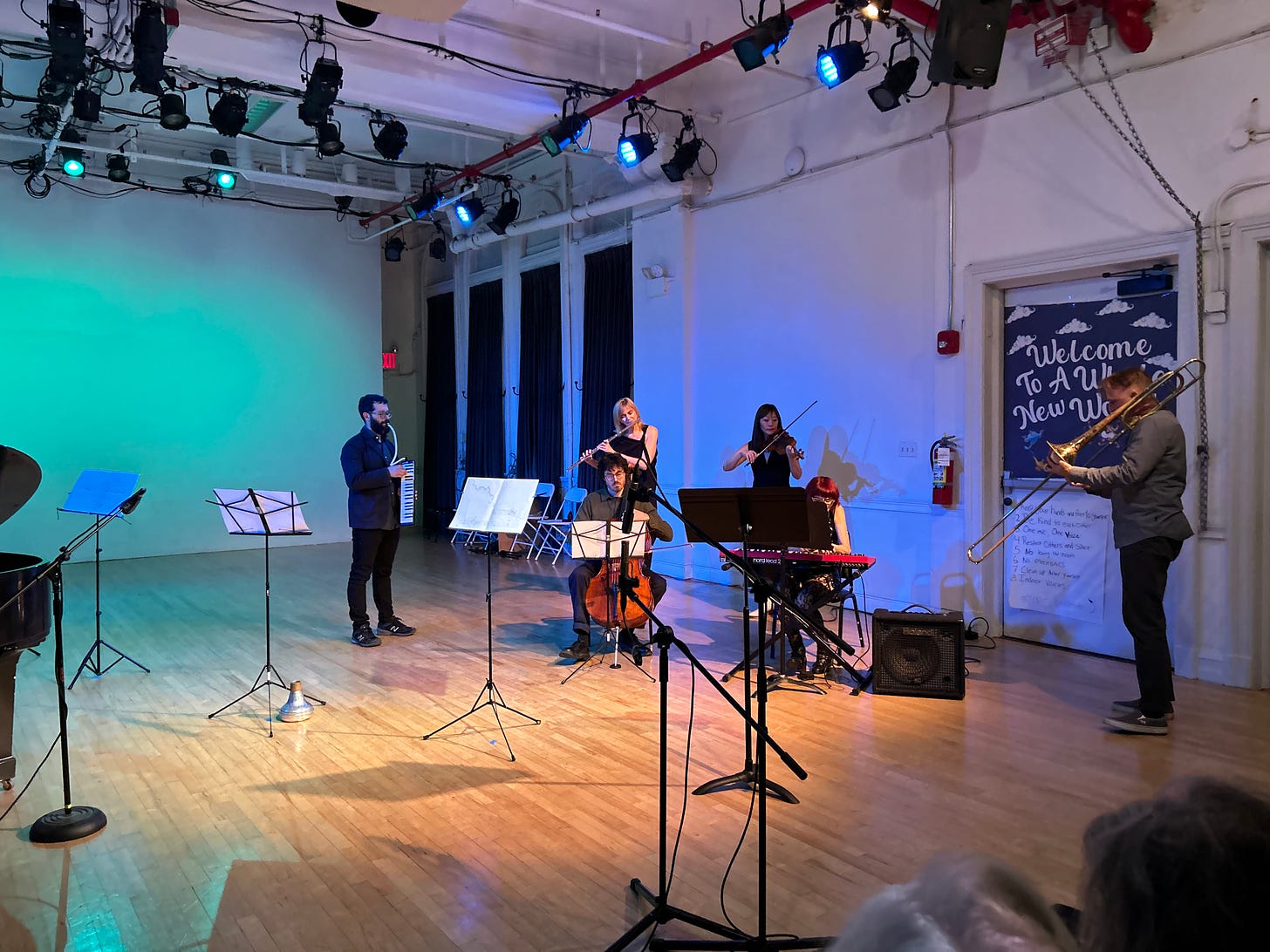Chamber Music of a Different Color
Musicians from Either/Or hissed, ripped, and walked through an eclectic program at University Settlement.
One of the funniest things about many of New York’s experimental/avant-garde music spaces is the clash between sophistication and grunge.
Marcus Pal’s just intonation in a chilly Clinton Hill basement floor apartment. Sean Meehan’s meditative snare drum in a dingy, just as chilly, (secret) Long Island City shack. In a sense, it’s always been this way. Roulette, after all, started at Jim Staley’s studio on West Broadway.
It’s funny because a lot of people who have only an idea of contemporary “classical” music—and don’t experience it—picture the genre’s consumers and practitioners as high priests with Dumbo art galleries for living quarters and perpetually turned-up noses. Believe me, the classical music=rich stereotype runs all the way from Carnegie down into the avant-garde. Which, of course, couldn’t be further from the truth. Rich people are often assholes, and the people in the city’s new music scene are some of the kindest I’ve met.
What’s even funnier is that when you look up the definition of “grunge” on Google, the first example sentence is, “He has a marvelous talent for making the most of downtown locations as well as suburban emptiness and industrial park grunge.” Google must be talking about Chris McIntyre, who, as curator for the Either/Or chamber ensemble, presented a riveting concert of recent works, including one live premiere and one US premiere, at University Settlement last night. I’m not sure if he’s done anything with suburban emptiness or industrial park grunge, but that could be next.
Thanks, Google, for my lede.
University Settlement, nestled a block away from the Tenement Museum, reminds me a little bit of my Catholic high school in New Hampshire, where the floors were somehow a mix of glossy and dirty and where the hall lighting felt more like a prison than an institution of learning. Which is not to diminish the Settlement’s initiatives to work closely with the community, especially immigrants, to combat economic inequality. It’s just that a noisy hoard of what sounded like teenagers stormed up the stairs in the middle of one of Kaija Saariaho’s most delicate works. But, hey, that’s the downtown scene for you.
Speyer Hall, the Settlement’s lovely second floor performance space with black-box seating, was bathed in a soothing cloak of blue light. Five folding chairs stood in a semicircle, each one topped with what looked like a toy treasure chest. It was only after violinist Jennifer Choi strolled on over to the setup, no applause, picked up one of the treasure chests, and wound it up, that I realized these were all music boxes.

Hannah Kendall’s solo violin piece, Tuxedo: Crown; Sun King (2021), is a meditation on Basquiat’s 1983 silkscreen-on-canvas work, Tuxedo. In an effort “to combine the Afrological and the Eurological” (Kendall’s words), the composer, who was in the audience, calls for the two middle strings to be wrapped by a dreadlock cuff, which gave a halted sound to the instrument and allowed and made for some unique ear candy.
Choi wound up three music boxes before she began playing. As one music box played the “Ode to Joy” from Beethoven’s Ninth and the others emitted indecipherable ditties, Choi played music totally opposite these tunes—unmelodic and disjointed. Kendall requires the violinist to, at times, sing along with the instrument, as well as project “tttthhhh” and “hwhhhh” noises.
The music boxes stopped playing and Choi continued. Toward the end, she wound up two different music boxes, which provided accompaniment while she tapped her bow ever so delicately on the strings, making little ding-y pip-pip-pips that I want simply, and emphatically, to describe as pretty. Phenomenal as always, Choi kept me at the edge of my seat, as she was completely in control of these wildly varying sounds, prompting me to wonder, how does she do it?
I asked, literally, the same question of pianist Kathleen Supové, who gave a focused performance of Jō Kondō’s Forme Semée (“Sown Form,” 1982), with Chris McIntyre on bucket-muted trombone.
I’ll take Either/Or’s word that, until last night, this piece hadn’t been heard in New York since 1984. With the fabric and texture—and, from what Supové showed me of the score, visuals—of Morton Feldman’s music, it’s uncertain, quiet, slow, and spacious. Supové told me she had to roll some of the intervals because she couldn’t reach. It has some beautiful harmonies, too, including fleeting New Age-y major seventh chords, and a wonderful mix of consonance and dissonance. It’s what I’ve recently been referring to as “vertical” music, which exists in space and hangs there, rather than “horizontal” music, which exists in time and goes from point A to point B.
But it’s hard to coordinate, Supové told me, and often does feel like slowly sowing seeds in soil, so methodical is its progression and trading off of solo parts (it can get boring at times). McIntyre’s intonation was excellent, even in a couple very high sustained notes. Supové’s mystique was the most obvious, but her articulation was the most subtle and artful, with velvety bass notes and percussive high notes that foreshadowed wonders to come. The duo could have been a bit more coordinated, but the music itself made up for the technical challenges.
Speaking of percussion, Russell Greenberg (pictured up top) sat at a table with pieces of 8.5/11 paper on it for an impassioned, funny, and just plain awesome performance of Inga Chinilina’s Wear and Tear (2020). The piece, which had its live premiere, makes the player bang their fists, scratch their nails, and smooth their palms on the wood table, as well as crumple, rip, and toss the paper. It was a symphony of crackly sounds and rhythms that made me tap my foot. Greenberg executed all the different rhythms, which were dictated by frequent accelerandi and ritardandi, with steady pacing and effective timing. I think I smiled the full way through.
I could have cried, though, during flutist Margaret Lancaster’s performance of Kaija Saariaho’s solo piccolo piece, Dolce Tormento (“Sweet Torment,” 2004), which requires the player to spit and breathe the lines of a sexually furious sonnet by Italian poet Petrarch (1304-1374), from his Il Canzioniere, into the instrument. Saariaho died in June, and Lancaster told the audience that she knew her, saying, “I still can’t believe she’s gone.” With a convincing Italian accent and lungy fury, commensurate with Petrarch’s words, she gave a compelling and loving performance, at times sounding as snaky as the Basilisk and as pained as Petrarch’s contemporary Dante must have been as he looked upon Beatrice at church (See La Vita Nuova).
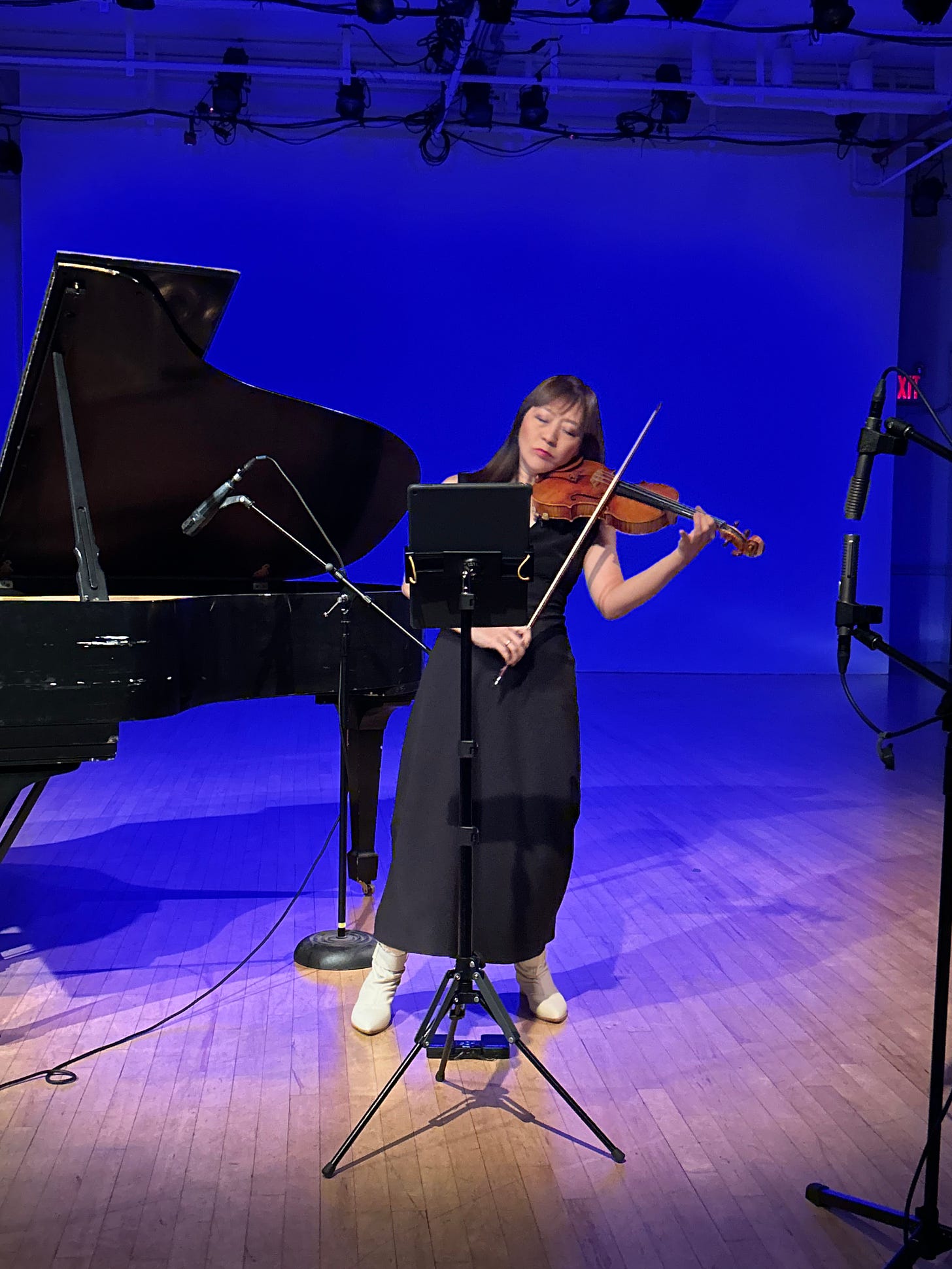
I was really moving to the syncopations of the next piece, Leroy Jenkins’s Thar He (2002), which Jennifer Choi and Kathleen Supové played with irony, sassiness, and tragic weight. Based on a specific incident in the tragedy of Emmett Till’s 1955 murder, the piece is named after the two words that Till’s uncle, Moses Wright, shouted when he publicly identified the defendants as the murderers during their trial.
Choi brought her trademark delicacy to bear throughout, but was a bit weak in her syncopations, not attacking them as forcefully as the blues influence of the piece requires, and not complimenting Supové’s syncopated attacks equally. Supové achieved an almost unbelievable percussive, knocking effect in the upper register of the piano, as she quietely and methodically hit one key, and then two—spanning a minor second—and back to one. It was like a ghost knocking on a wood door.
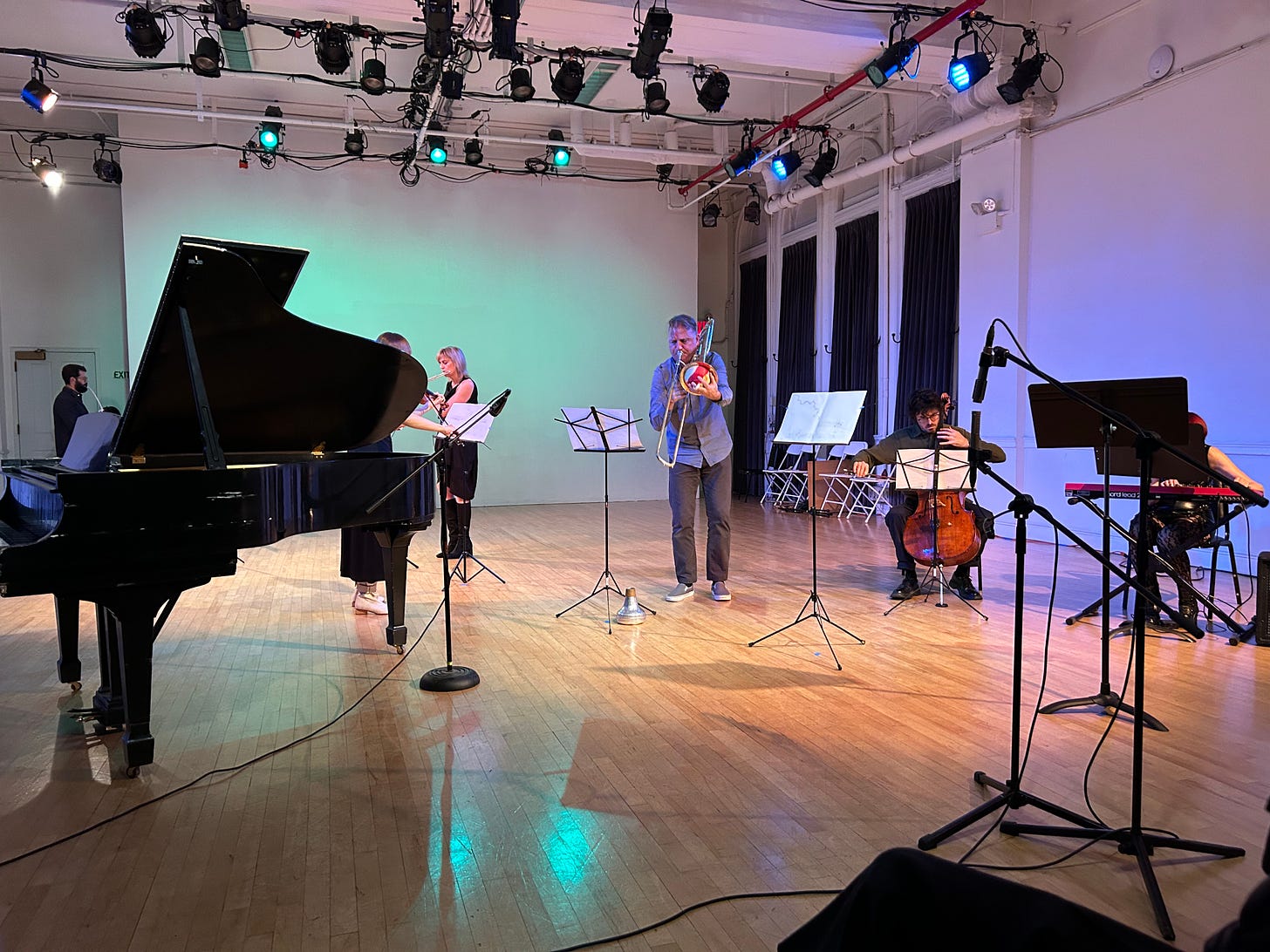
McIntyre told the audience to “put yourself in summer” for the last piece, Joanna Ward’s A London plane tree hid me from the sun (2022), which happened to be having its U.S. premiere. At the beginning, all the evening’s musicians stood at the back of the stage. In a line, diagonal to the room, stood several music stands with sheet music on them. Supové, on synth, began solo with a note which bent ominously down, then up, then John Popham joined on cello, stewing it with his bow, scratching above the bridge in circles. Greenberg churned out a medieval drone on his melodica. McIntyre blew air through his bucket-muted trombone. Someone whistled.
As the piece progressed, the musicians walked forward to different music stands. Supové played cluster chords. Lancaster sounded like she was basically spitting into her flute. By the end, they had all congregated at the front of the stage, in a configuration that faced the audience.
Overall, they sounded like a traveling band of out-of-tune musicians who were slowly sauntering into the space age. Like the band Mahler heard outside of his window as a kid when they were on their lunch break, noodling. But by the end, their sound had metamorphosed into something more elevated, more sustained and connected, almost religious, with momentary bird calls (major thirds) in the trombone (or was that morning Reveille?). It ended with the synth dying, morendo.
Either/Or is already renowned, and last night they solidified their standing as a versatile and creative ensemble who, nonetheless, have no pretensions or vanity. The concert’s tributary feel—for Jenkins and Saariaho, especially—made for a welcome embrace of musical lineage and left me looking eagerly forward to their next concert on December 8.
